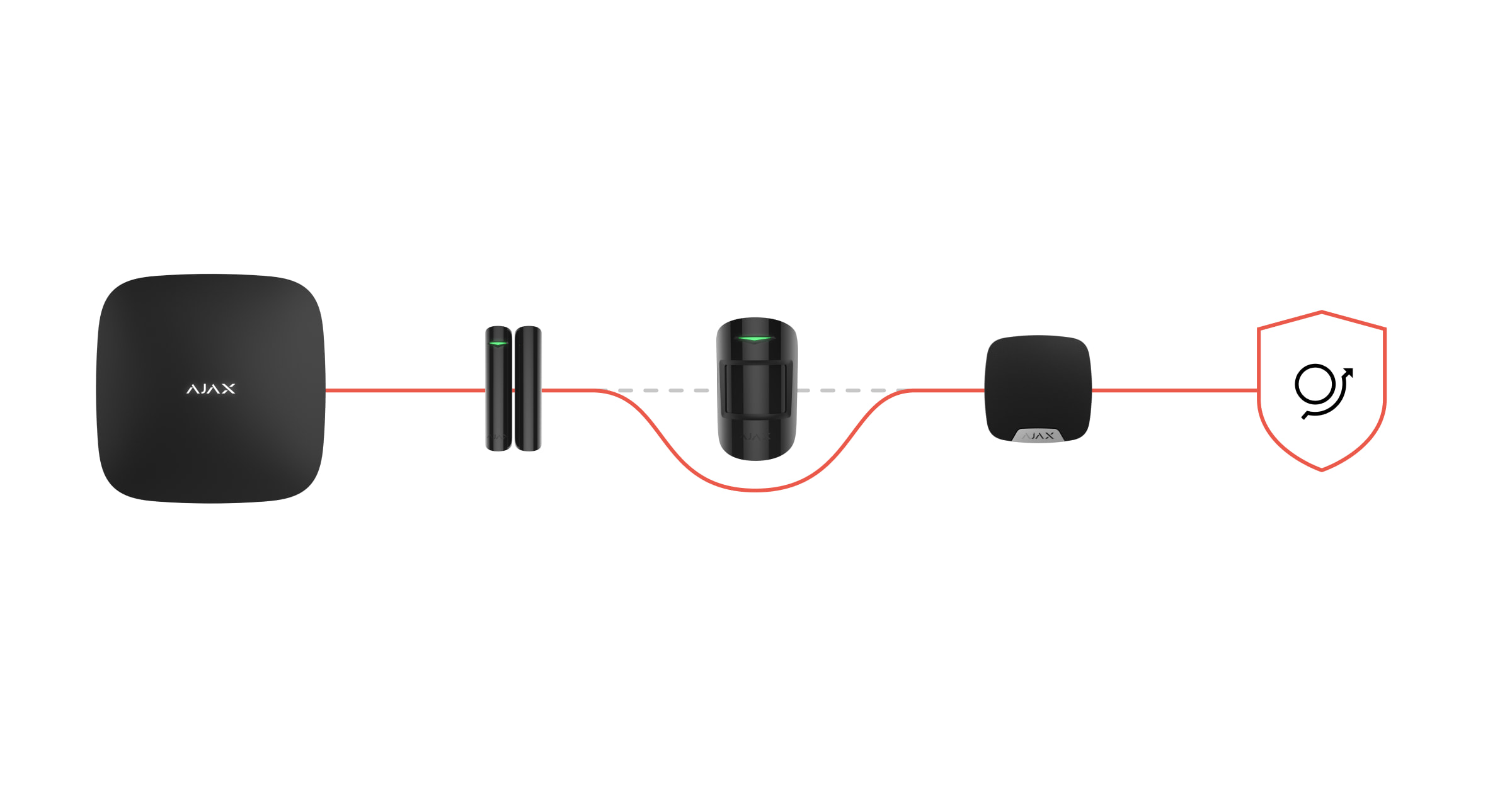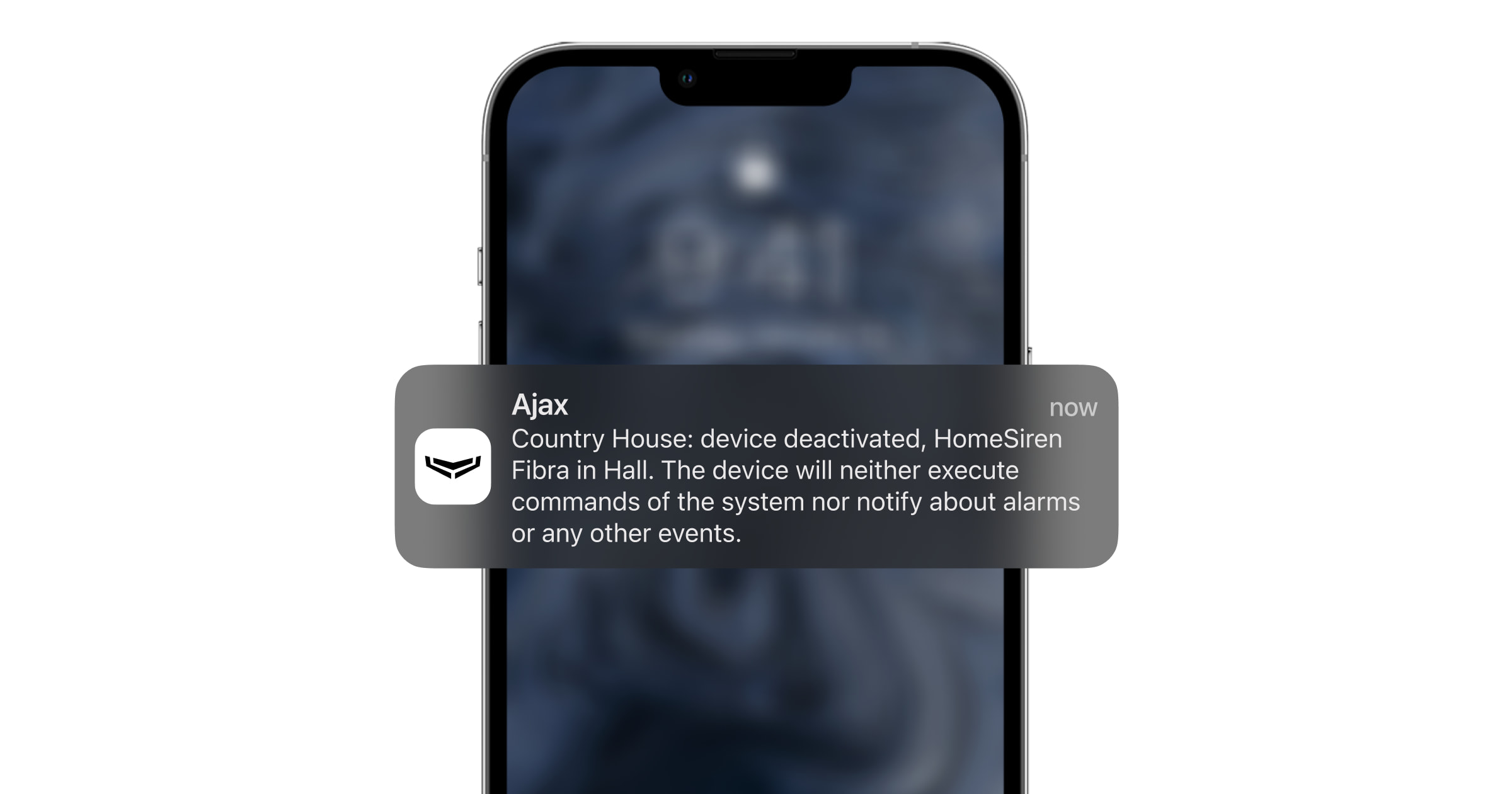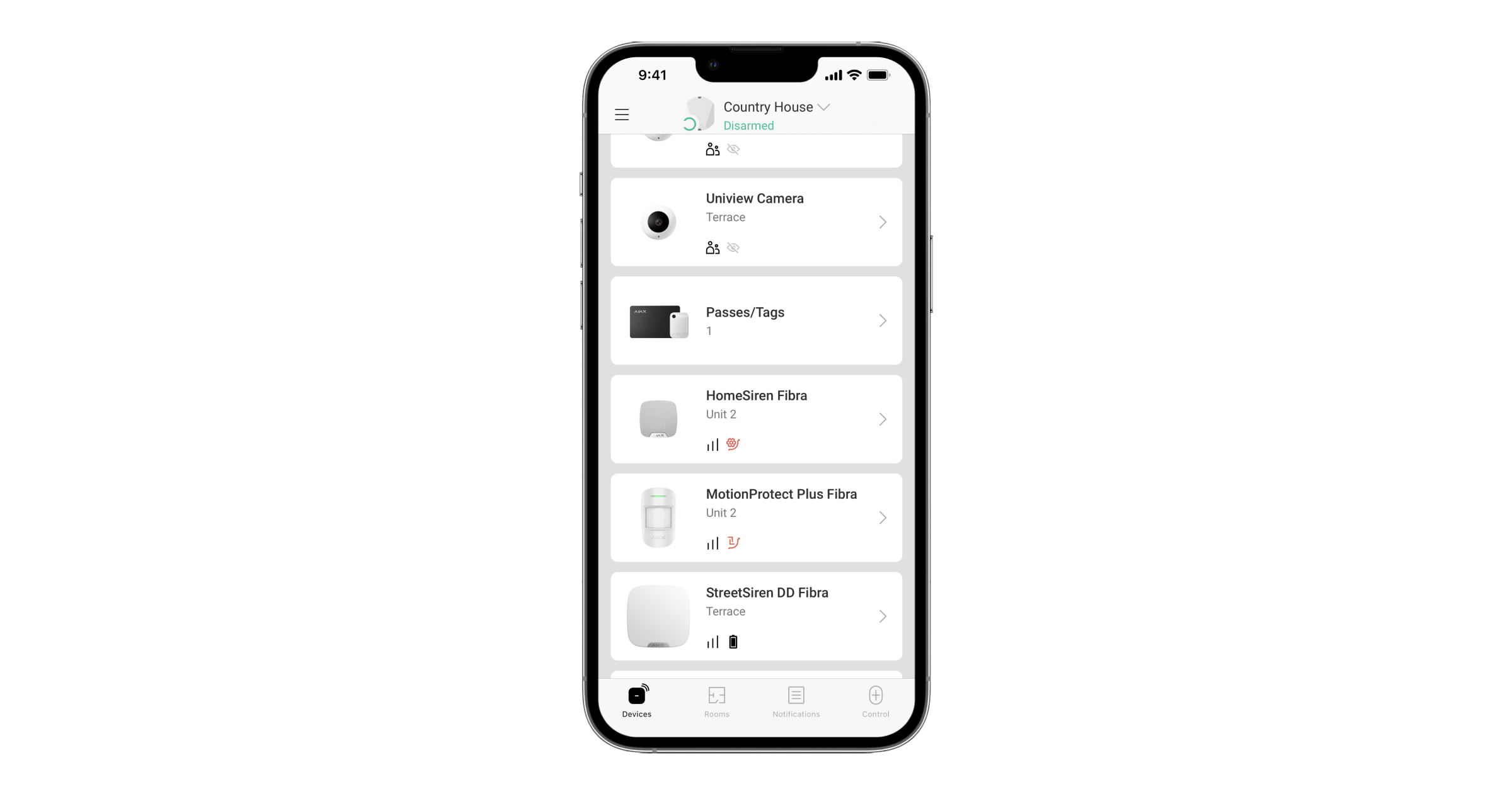Deactivating the device may be necessary if the device is incorrectly installed or configured, loses connection with the hub, or is defective. In this case, a PRO or a user with administrator rights will deactivate the device until the removal of malfunction causes.
The deactivated device cannot execute system commands or run automation scenarios. The users and the security company do not receive push notifications, SMS, or calls about this device’s alarms, malfunctions, and other events. The current device states, like the status of connection with the hub or battery charge level, are still displayed on the Devices tab.
Use One-Time Deactivation setting if you need to disable device events once for a time the armed mode is active.
Requirements for the setting to work correctly
The ability to deactivate devices is supported by hubs with OS Malevich 2.9 and higher. It is required to use Ajax apps starting with these versions:
| For iOS phones | For Android phones | For desktop |
|
Ajax Security System 2.15 Ajax PRO: Tool for Engineers 1.8 |
Ajax Security System 2.18 Ajax PRO: Tool for Engineers 1.8 |
PRO Desktop 2.6.0 |
Only a user with administrator rights can deactivate the devices’ events.
It is impossible to exclude Ajax control panels from the system.
Except for hubs, the setting is available for all Ajax devices, as well as for third-party wired devices connected to the system via MultiTransmitter.
How to configure Permanent Deactivation*
- Open the Ajax app and select the hub. Make sure that it is disarmed.
- Go to the Devices
tab.
- Select the device and go to its Settings by clicking the
icon.
- Go to the menu item Permanent Deactivation and choose one of the available options:
- No — the device operates in normal mode and transmits all events.
- Entirely — the device will not execute system commands or run automation scenarios.The system will ignore device alarms, low battery warnings, notifications about the lid opening, loss/restoration of communication with the hub, etc.
- Lid only —the system will ignore tamper alarms. At the same time, the security system will record other device events (alarms, malfunctions) and transmit them to Ajax apps and the Central Monitoring Station (CMS).
- Click Save.
- Repeat steps 2–5 for other devices that need to be disabled.
When the device events are enabled/disabled, the CMS and users receive the corresponding notification in the Ajax apps.
Depending on the selected option, the device is marked with an icon:
— the device events are completely deactivated.
— the system ignores triggering notifications about the device’s lid state.
How the setting works
When System Integrity Check is enabled in the hub settings, the devices with deactivated events are not considered.
If the Alert with a siren if lid of hub or any detector is open option is enabled in the hub settings, the siren does not respond to alarms of the deactivated device.
How Ajax devices work when Permanent Deactivation is on
- When the radio signal range extenders are deactivated, the system ignores only their events. Detectors connected via range extenders operate in normal mode.
- Deactivated automation devices do not run automation scenarios. When deactivated, the device saves the current state (active or inactive). It is impossible to change the state of the deactivated automation device in the app.
- Deactivated fire detectors do not trigger the Interconnected Ajax Fire Detectors Alarm. At the same time, smoke detection triggers the detector’s built-in siren.
- The deactivated KeyPad displays the security system status (armed, disarmed) with indication, but does not execute commands.
- The deactivated Ajax SpaceControl does not send arming/disarming commands, and the panic mode is inactive.
- The deactivated Button in the panic mode does not transmit alarms to the hub. In the control mode, it does not start automation scenarios. The deactivated DoubleButton does not send alarms to the hub.
StreetSiren with a firmware version older than 3.71.0 cannot be deactivated.
* The Permanent Deactivation feature can make your system non-compliant or compliant with EN 50131 at a lower security grade.



